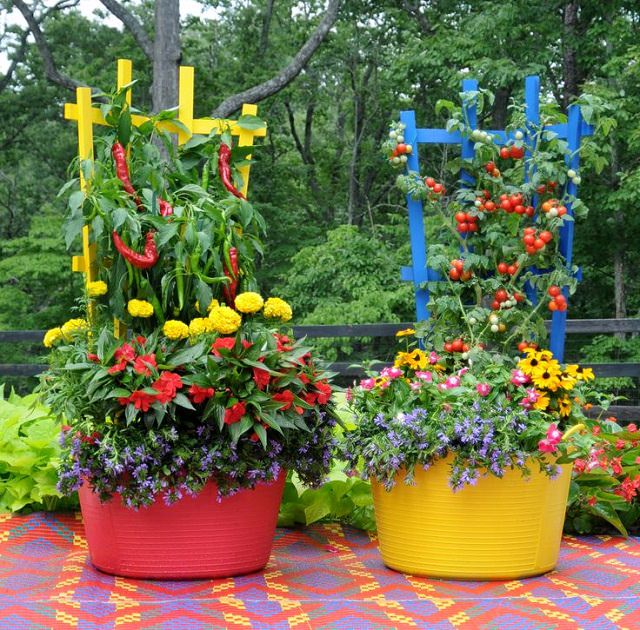How to Grow Easy Vegetables in Containers: A Beginner's Guide

Are you dreaming of a lush garden but lack the space? Do you want to grow your own vegetables but feel intimidated by the process? Container vegetable gardening is the perfect solution. Imagine transforming your balcony, patio, or even a sunny windowsill into a thriving oasis of fresh, homegrown produce. Let's dive into the world of easy vegetables to grow in containers and discover how you can become a successful beginner vegetable gardener.
Why Choose Container Vegetable Gardening?
Container gardening is like having a miniature farm right at your fingertips. It's ideal for those with small spaces, offering flexibility, portability, and ease of maintenance. Plus, you can control the soil quality and avoid common gardening issues like pests and diseases. So, why not give it a try?
Getting Started: Essential Container Gardening Tips
Choosing the Right Containers
The first step in container vegetable gardening is selecting the right pots. Look for containers with good drainage to prevent waterlogging. Plastic, terracotta, and fabric pots are all excellent choices. Ensure your containers are large enough to accommodate the root systems of your chosen plants.
Selecting the Best Soil
High-quality potting soil is crucial for successful container gardening. Avoid using garden soil, as it can be too heavy and compacted for container plants. Opt for a well-draining, nutrient-rich potting mix designed for vegetables.
Picking the Perfect Location
Most vegetables thrive in full sun, so choose a spot that gets at least 6-8 hours of sunlight daily. If you're limited to a shady area, consider shade-tolerant plants like lettuce and spinach.
Easy Vegetables to Grow in Containers
Lettuce
Lettuce is one of the easiest container vegetables to grow. It prefers cooler temperatures and partial shade, making it perfect for balconies and patios. Plant lettuce seeds directly in the container, keeping the soil consistently moist. Harvest the outer leaves as they grow, allowing the plant to continue producing.
Tomatoes
Tomatoes are a favorite among container gardeners. Choose compact varieties like 'Patio,' 'Tiny Tim,' or 'Balconi.' Plant them in a large pot with a trellis or cage for support. Tomatoes love full sun and well-draining soil. Water them regularly and provide consistent nutrients for a bountiful harvest.
Radishes
Radishes are quick-growing and perfect for beginners. They prefer cooler temperatures and can be grown in partial shade. Sow seeds directly in the container, ensuring the soil stays moist. Radishes are ready to harvest in as little as 20 days.
Herbs
Herbs like basil, parsley, and chives are easy container plants that add flavor to your meals. Most herbs prefer full sun and well-draining soil. Plant them in small pots and place them on a windowsill or balcony. Regularly pinch back the tips to encourage bushier growth.
Peppers
Peppers are another great choice for container gardening. Choose compact varieties like 'Sweet Banana' or 'Cayenne.' Plant them in a large pot with well-draining soil and place them in full sun. Water them regularly and provide consistent nutrients for a successful harvest.
Container Gardening Tips for Success
Watering
Containers dry out quickly, so regular watering is essential. Check the soil moisture daily and water when the top inch feels dry. Ensure your containers have good drainage to prevent waterlogging.
Fertilizing
Container plants rely on you for nutrients. Use a balanced, water-soluble fertilizer every 2-4 weeks during the growing season. Follow the package instructions for the best results.
Pest and Disease Control
Keep an eye out for pests and diseases. Regularly inspect your plants and remove any affected leaves. Use organic pesticides and fungicides as needed. Rotate your crops to prevent the buildup of pests and diseases.
Conclusion
Container vegetable gardening is a rewarding hobby that brings fresh, homegrown produce right to your doorstep. With the right containers, soil, and location, you can grow a variety of easy vegetables in containers. From lettuce and tomatoes to radishes and herbs, the possibilities are endless. So, what are you waiting for? Get started today and enjoy the fruits (and vegetables) of your labor!
FAQs
What are the best vegetables to grow in containers?
Some of the best vegetables to grow in containers include lettuce, tomatoes, radishes, herbs, and peppers. These plants are compact and well-suited to container gardening.
How often should I water my container vegetables?
Containers dry out quickly, so regular watering is essential. Check the soil moisture daily and water when the top inch feels dry. Ensure your containers have good drainage to prevent waterlogging.
What type of soil is best for container gardening?
High-quality potting soil is crucial for successful container gardening. Opt for a well-draining, nutrient-rich potting mix designed for vegetables. Avoid using garden soil, as it can be too heavy and compacted for container plants.
How do I control pests and diseases in my container garden?
Keep an eye out for pests and diseases. Regularly inspect your plants and remove any affected leaves. Use organic pesticides and fungicides as needed. Rotate your crops to prevent the buildup of pests and diseases.
Can I grow vegetables in containers indoors?
Yes, you can grow vegetables in containers indoors. Choose compact varieties and place them in a sunny windowsill or under grow lights. Ensure the containers have good drainage and provide consistent nutrients for a successful harvest.


0 Response to "How to Grow Easy Vegetables in Containers: A Beginner's Guide"
Post a Comment